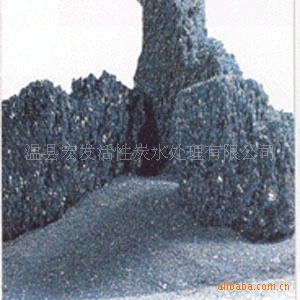项目 | 单位 | 指标 | 重结晶SIC | 渗硅碳化硅 | 体积密度 | g/cm3 | 2.60-2.68 | 3.02 | 气孔率 | % | ≤17 | 0 | 抗折强度 | Mpa (20℃) | ≥90 | 220 | | Mpa (1200℃) | ≥100 | 230 | 热膨胀系数 | 10-5 K | 4.8 | 4.8 | 导热系数 | W/mk | 23 | 45 | 杨氏莫量 | Gpa (20℃) | 240 | 420 | 最高工作温度 | ℃ | 1650 | 1320 | SIC | % | ≥99 | 80 | Si+SiO2 | % | ≤0.6 | 19 | | % | ≤0.1 | 0.15 | 耐酸性 | | 不与任何强酸反应 (浓磷酸在300℃以上除外) | 与强酸有微弱反应,与浓磷酸在300℃有强烈反应 | 耐碱性 | | 不与强碱反应 | 与强碱反应 |
The use of silicon carbide 1. Application in non-ferrous metal smelting industry With its high temperature, high strength, good thermal conductivity and impact resistance it can be used for high-temperature indirect heating materials, such as distillation furnace, distillation furnace trays, aluminum electrolysis tank, copper melting furnace linings, zinc furnace arc plate and thermocouple protection tubes. 2. The application in iron and steel industry With its anti-corrosion, thermal shock resistance, good thermal conductivity and other characteristics, it can be used for large blast furnace lining to increase service life. 3. The applications in metallurgical beneficiation industry The hardness of silicon carbide is only next to diamond. Silicon carbide has a strong wear resistance, is the ideal material for making wear-resistant pipe, impeller, pump room, hydrocyclone and the ore lining of ore bucket. 4. The application in building, ceramics and wheel industry With its thermal conductivity, heat radiation, high heat intensity characteristics, it can be used for making kiln sheet, which can not only reduce the kiln capacity, but also increase the installed furnace capacity and product quality and shorten the production cycle. 5. The application in energy saving It can be used for making heat exchanger for its good thermal conductivity and thermal stability. The fuel consumption can be reduced by 20% and it saves fuel by 35%, thus it increases the productivity by 20-30%, its wear-resistant is 6-7 times the normal wear-resistant materials especially in the usage in mining pipeline. Product performance index: Item | Units | Indicators | SICRSIC | PCRBSC | Density | g/cm3 | 2.60-2.68 | 3.02 | Porosity | % | ≤ 17 | 0 | Flexural strength | Mpa (20 ℃) | ≥ 90 | 220 | Mpa (1200 ℃) | ≥ 100 | 230 | Coefficient of thermal expansion | 10-5 K | 4.8 | 4.8 | Thermal conductivity | W / mk | 23 | 45 | Young modulus | Gpa (20 ℃) | 240 | 420 | Max. Operating Tem | ℃ | 1650 | 1320 | SIC | % | ≥ 99 | 80 | Si + SiO2 | % | ≤ 0.6 | 19 | | % | ≤ 0.1 | 0.15 | Acid resistance | | Not reacting with any strong acid (except that when concentrated phosphoric acid at 300 ℃) | There are weak reactions with the strong acid reaction, and when the concentrated phosphoric acid at 300 ℃they has a strong reaction | Alkali | | No reaction with the alkali | Reaction with alkali |
| 






